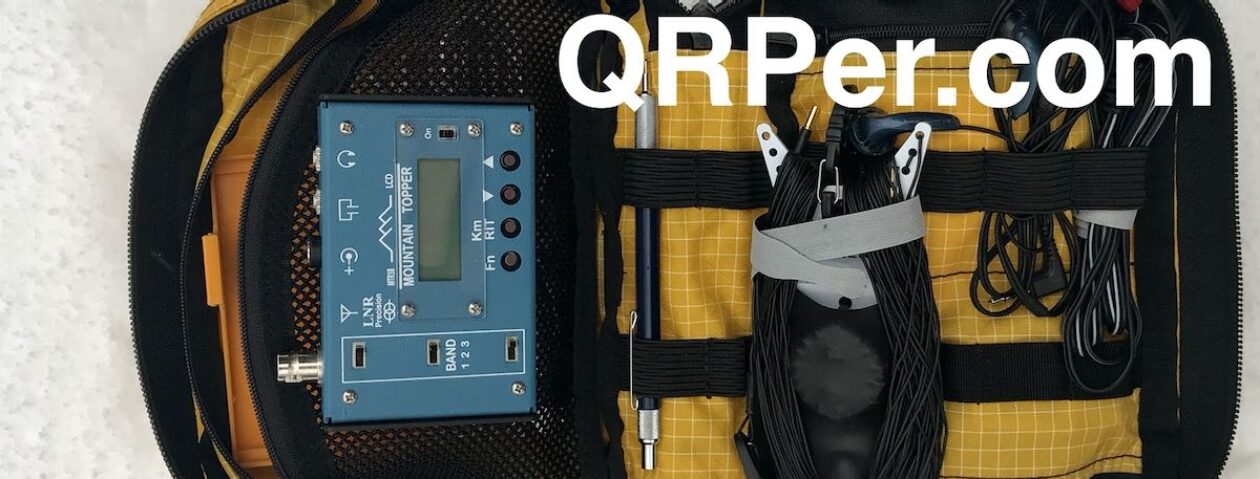On February 9, 2025, my good friend Vlado (N3CZ) and I headed out to Pisgah National Forest (US-4510) near Looking Glass Falls for a joint POTA activation.
 This is Part 2 of our activation — if you missed Part 1, you can check it out here!
This is Part 2 of our activation — if you missed Part 1, you can check it out here!
 While I typically write much longer field reports, I’m still in the final days of Hurricane Helene debris removal around our property, which has been my main focus.
While I typically write much longer field reports, I’m still in the final days of Hurricane Helene debris removal around our property, which has been my main focus.
As with Part 1, I’ll keep this one short and sweet–a postcard-style field report. I truly appreciate everyone’s understanding!
Pisgah National Forest (US-4510)
 After wrapping up Part 1 with the Elecraft KX1, we decided to switch things up for the second half of our activation.
After wrapping up Part 1 with the Elecraft KX1, we decided to switch things up for the second half of our activation.
We swapped the KX1 for the Penntek TR-45L skinny and replaced my paddles with the TouchPaddles Model P1. The antenna setup remained the same: the QRPGuys Portable No Tune End Fed Half Wave, which continued to perform like a champ.
The weather, again, was amazing — sunshine, cool air, and the peaceful sounds of the forest surrounding us.

Vlado added more QSOs to his log, making the most of the lively bands.
When it was my turn to jump back in, I logged 18 contacts in 19 minutes before we had to call QRT for the day.
It felt like one of those activations you never want to end. As always, the TR-45L was a pure pleasure to operate.
Gear:
 Note: All Amazon, CW Morse, ABR, Chelegance, eBay, and Radioddity links are affiliate links that support QRPer.com at no cost to you.
Note: All Amazon, CW Morse, ABR, Chelegance, eBay, and Radioddity links are affiliate links that support QRPer.com at no cost to you.
Radio
- Penntek TR-45L “Skinny”
Antenna System and Throw Line
- QRPGuys Portable No Tune End Fed Half Wave Antenna
- ABR Industries 25’ RG-316 cable assembly with three in-line ferrites (Use Coupon Code ABR10QRPER for 10% Discount!)
- Weaver arborist throw line/weight and storage bag
Key
- TouchPaddles Model P1 (discontinued)
- Key cable: Cable Matters 2-Pack Gold-Plated Retractable Aux Cable – 2.5 Feet
Battery
Camera and Audio
- DJI OSMO 4 action camera with Joby Telepod Sport Tripod
- DJI Wireless Microphones
QSO Map
Here’s what this five-watt activation looked like when plotted out on a QSO Map. Please note that all of the orange lines are the QSOs from this part of the activation on 30 meters.Click on the map image to enlarge.
Activation Video
Here’s my real-time, real-life video of the entire activation. As with all of my videos, I don’t edit out any parts of the on-air activation time. In addition, I have YouTube monetization turned off, although that doesn’t stop them from inserting ads before and after my videos.
Note that Patreon supporters can watch and even download this video 100% ad-free through Vimeo on my Patreon page:
Click here to view on YouTube.
Thank you
 Thank you for joining us during this activation and for understanding why I’m keeping the field report portion on the short side!
Thank you for joining us during this activation and for understanding why I’m keeping the field report portion on the short side!
 Of course, I’d also like to send a special thanks to those of you who have been supporting the site and channel through Patreon, and the Coffee Fund. While not a requirement, as my content will always be free, I really appreciate the support.
Of course, I’d also like to send a special thanks to those of you who have been supporting the site and channel through Patreon, and the Coffee Fund. While not a requirement, as my content will always be free, I really appreciate the support.
As I mentioned before, the Patreon platform connected to Vimeo makes it possible for me to share videos that are not only 100% ad-free but also downloadable for offline viewing. The Vimeo account also serves as a third backup for my video files.
Thanks for spending part of your day with us! Have a wonderful weekend!
Cheers & 72,
Thomas (K4SWL)
PS: Consider joining our QRPer.net discussion board! It’s an active community of radio operators who enjoy helping and supporting each other. It’s also the best place to ask any questions you might have about radios, field activities, antennas, or pretty much anything amateur radio. Click here to join.














































 ) In an effort to shake things up, I decided to use all three keys currently in my POTA kit: the VK3IL-design paddle gifted to me by Brian K3ES, the BaMaTech III paddle, and the CW Morse Pocket Single Paddle/Cootie key.
) In an effort to shake things up, I decided to use all three keys currently in my POTA kit: the VK3IL-design paddle gifted to me by Brian K3ES, the BaMaTech III paddle, and the CW Morse Pocket Single Paddle/Cootie key.







































